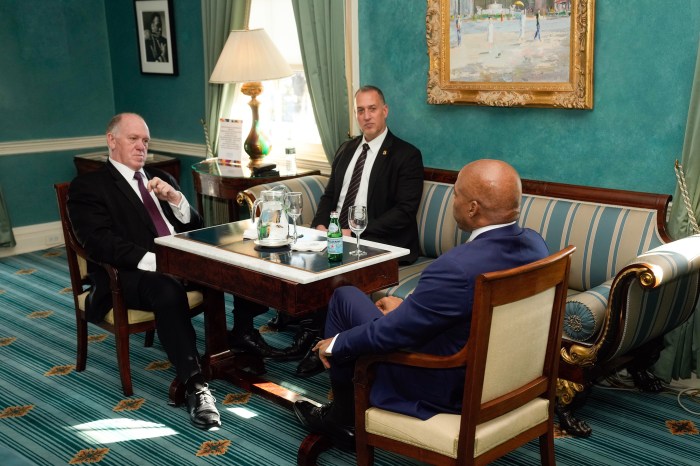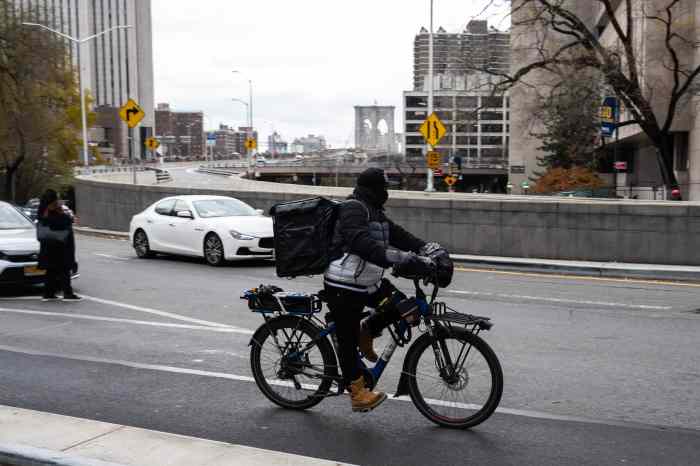
The heavy hit of a bowling ball on a wooden lane and the sharp cracks of crashing pins create a blue-collar melody that millions enjoy nightly. The United States’ most popular participatory sport has brought about hours of wholesome family time, but until the tide began to turn in New York City, it had an unseemly reputation, according to new research.
“Bowling was ‘almost a dirty word’ in the 1930s, affiliated with ‘beer guzzlers, low types, and shabby quarters,’” journalist and Columbia University professor Nick Hirshon writes in “A Forgotten Pioneer in Sports Television: Phillies Jackpot Bowling (1959-1960),” published earlier this month in the journal American Journalism.
“Back in the ’30s, ’40s, and ’50s, bowling had an unsavory reputation. It was something people did in the back of a bar. It was something that kids skipped school to do,” he said in an interview.
From the early 1900s, action bowlers — those who played for money — were influenced by New York’s mafia families and people looking for easy money. The scenes were often in the back alley of pubs and would be filled with cigarette smoke, dirt, grit, guns and knives with mostly men playing for money and their lives, according to author and "Bowlers Journal International" editor Gianmarc Manzione, originally of Bay Ridge.

"Even as bowling became an indoor sport with Knickerbocker Alley in New York in the mid-19th century, it was still a gambling activity," the now Tampa, Florida, resident said.
Some of the most popular indoor sites were based in Queens in places 89-year-old bowling hall of famer Jack Clemente remembers well.
He recalled a time when he watched action bowling hustler Iggy Russo fake a heart attack during the 10th frame of a game to avoid losing a bet, a tale memorialized in The New York Times.
“When he was bowling, the mafia told him they were going to kill him. They said if you wanna live, you’re gonna dump the game and they showed him their gun,” he said. Then, he remembers, Russo swung his arm back to throw the ball and suddenly collapsed, holding his chest. “People call the ambulance and he gets away. And then he gets about 10 blocks out and he tells them, ‘let me out here, I’m alright.’”
Russo’s melee with the mafia is just one of many stories that deterred families from going to bowling alleys until “Phillies Jackpot Bowling” came on the air, according to Hirshon’s research. From 1959 to 1960, average Joe bowlers from around the country competed on the show to get the most strikes and win a jackpot.
When the show came to New York from New Jersey in 1959, it set up shop at Hollywood Bowling Lanes in Rego Park. It later moved to Woodhaven Lanes in Glendale.
"Shows like that helped provide an aspirational model to those who were trying to make a living doing the thing they loved," said Manzione. "I think New York, for a lot of reasons, was an inevitable setting for something like that."
Bowling had already been growing in popularity for a few years, but according to Hirshon, the show was what really ignited bowling’s mainstream fandom.
“I think Woodhaven Lanes in particular brought a sort of prestige,” Hirshon said. “When people just see a bowling alley like that — 60 lanes, brand new — it just had a certain aura about it that previous bowling alleys in the back of a little bar weren’t going to bring.”
Hirshon believes it was the famous hosts, including Yankees broadcaster Mel Allen, as well as the large payouts that helped pave the way as well. One of the largest jackpots on the show — of $33,000 — went to 47-year-old teacher, Frank Clause, from Pennsylvania, who earned his claim to fame at Woodhaven Lanes.
“Jackpot Bowling” eventually landed in the gutter. After 11 months in New York, the show moved to Los Angeles, where it was canceled after 26 weeks.
But New York’s impact on the sport has lasted for decades, taking it from being a dirty game in the alleys of Queens to one that everyone in the five boroughs and beyond can enjoy.




































